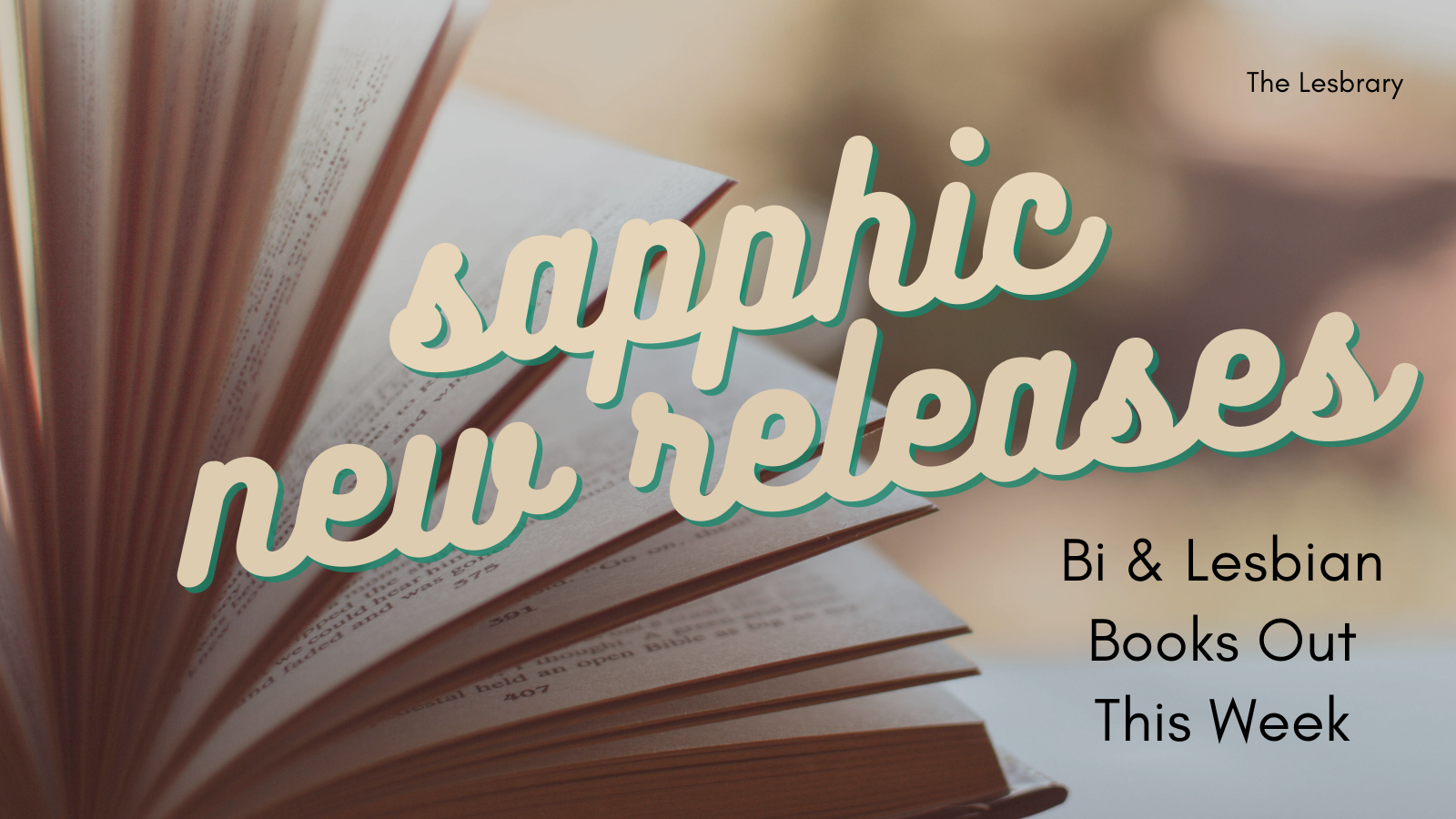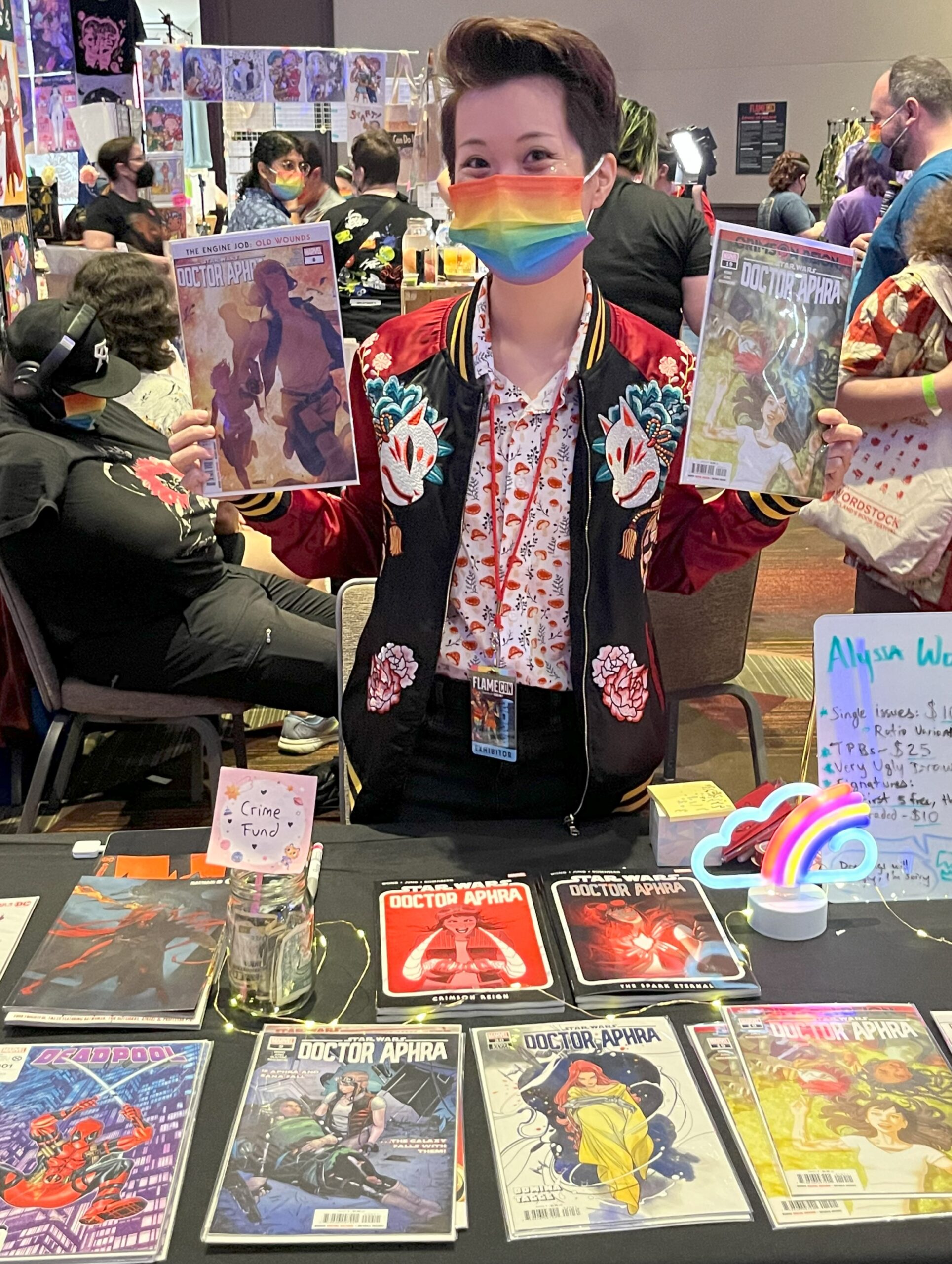
I have a little collection of sapphic Christmas books that I save up to read in December. It isn’t a long list, but I try to make room for at least one every year. At first, I wasn’t sure why I was doing it. I don’t feel a strong pull towards Christmas books in general—although I celebrate, I’m not exactly a deck-the-halls-er. Usually my celebrations are a little more quiet, and the highlight is our family stocking exchange. The few times that I have attempted a straight/cis/allo M/F Christmas romance, I was left wanting. So why do I save up queer holiday stories, especially F/F romances, when I’m not usually much of a romance reader?
I’ve noticed that I’m not the only one. I run a bi and lesbian books tumblr, and every year, I see requests for queer holiday books, especially YA ones. Unfortunately, although there is a modest collection of queer Christmas romances and a handful of other holidays, queer holiday YA is very difficult to find, and any genre other than romance is thin on the ground. It’s frustrating to see so much demand for this and not see publishing houses prioritizing these titles—it’s not that no one is writing these stories, it’s that they’re not being picked up and promoted.
Which brings me back to my original question: what is the appeal? Why is there such demand for queer holidays books, especially for teens? In one respect, it’s simple: lots of people like themed reading, and queer people are no exception. It’s not unusual to want to prioritize horror books at Halloween or Christmas books in December, if that’s what you celebrate. I don’t think that’s the whole story, though.
Holidays are complicated for many queer people. It’s a time of family, togetherness, and tradition—and for many queer people, those have been difficult to come by. Biological families aren’t always accepting of their queer relatives, and whether that means ties are severed completely, or those relationships are made complicated, it affects how we think of holidays. Many people have to be closeted around their family or change their gender expression. They may be misgendered or face microaggressions when they get together over the holidays. Others have made their own chosen families, or are still seeking where they belong.
Tradition is also a sticking point for many queer people. Tradition can mean familiarity and happy memories, like exchanging stockings is for my family, but it can also be suffocating. It can be a reason to stifle someone’s gender expression, or an excuse to keep another family member unwillingly in the closet. Tradition can be used to reinforce repressive gender roles, or even to turn away from financial realities—it’s tradition for everyone to give everyone else a gift, regardless of who lost their job this year!
That tension between traditional depictions of holidays—as a mostly harmonious gathering of biological family—and the reality of many queer people’s lives doesn’t negate the appeal, however. In fact, I think that the fact that it doesn’t always match that vision of the holidays can make us long to have our own version. We want to see our own possible futures, and that’s even more important for teenagers. A queer holiday book, especially a sappy romance, can make us imagine that we can keep all of the good parts of the holidays without having to put up with the bad parts.
Queer holiday stories matter because they reconcile past and possibility. They imagine a family and traditions that are welcoming, that don’t require us to sacrifice parts of ourselves to fit in. I’m lucky enough to have a biological family who is accepting, but many other queer and trans people don’t have that privilege. Queer holiday stories let us immerse ourselves in a world that is gentler and kinder, that never asks us to choose between being our authentic selves and maintaining our familial relationships.
Even for queer people who have accepting biological families, it can still be alienating to see the same cis/het/allo Christmas stories over and over. Queer holiday books fill in those gaps as well as letting us imagine our own future traditions. I hope that soon we see a lot more queer holiday stories hit the market, especially teen ones and stories that depict many different belief system, races, genders, and other intersectionalities. The demand is there, so now we’re just waiting for publishing to pick up the slack!
Looking for sapphic Christmas books? Check out the Christmas tag!
This post originally ran on Book Riot.

